Almost 40 years in the making, Phil Mason’s ‘Ebridge’ covers his entire modelling life and has moved with him, and with the times.
Words: Chris Gadsby Photography**: Chris Nevard** Artwork: Andrew Mackintosh
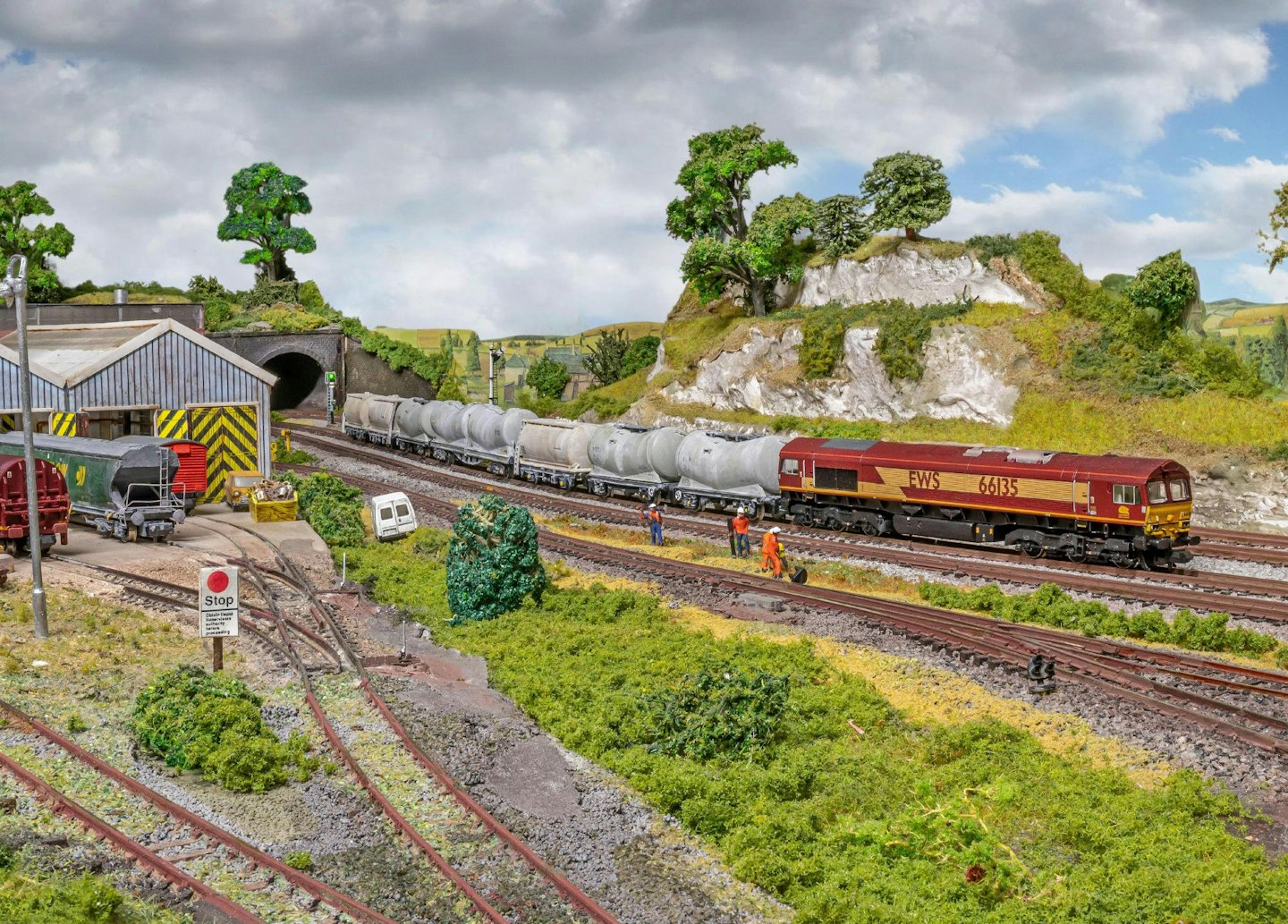
What makes this layout great?
“ ‘Ebridge’ has a legacy about it. This isn’t an exhibition layout where everything is perfectly modelled. It looks great, but Phil is able to look around the layout and recount modelling builds of years past that still find a home on ‘Ebridge’, a layout that covers his entire modelling life. ”
For a lot of people, an impending house move would result in the dismantling of their precious model railway, perhaps to be rebuilt, perhaps never to have a locomotive run across it again. This is particularly the case when layouts are built permanently into a room and cutting up the baseboards would result in an irrecoverable mess. However, life finds a way, and Phil Mason has always found a way to get his layout ‘Ebridge’ from one house to the next, and then the next, and then the next!
“Over the years the layout has been in six locations across four houses, before eventually finding what I hope will be a permanent home in my current loft. It started life in 1986 as a 9ft by 6ft layout in my terraced house and I’m still making alterations to it today. The concept has always been an ‘N’ gauge layout that would allow for both end-to-end running and a looped section in the same scene, which required a reversing loop. It was simple enough to do in ‘N’. The issue in the first house though was that I had a wrap-over section with the reversing loop hidden underneath the main station, which proved to be a nightmare whenever there was a problem as the whole station had to be lifted off. When I moved to my current home I put the layout in the loft but couldn’t lift the station off easily because of the roof trusses, and a 6ft wide layout proved to be too cramped, so I took the opportunity to widen it to 10ft. The lift off terminus station was then added as a ‘leg’ to one corner, giving me a total area of 18ft by 10ft.”
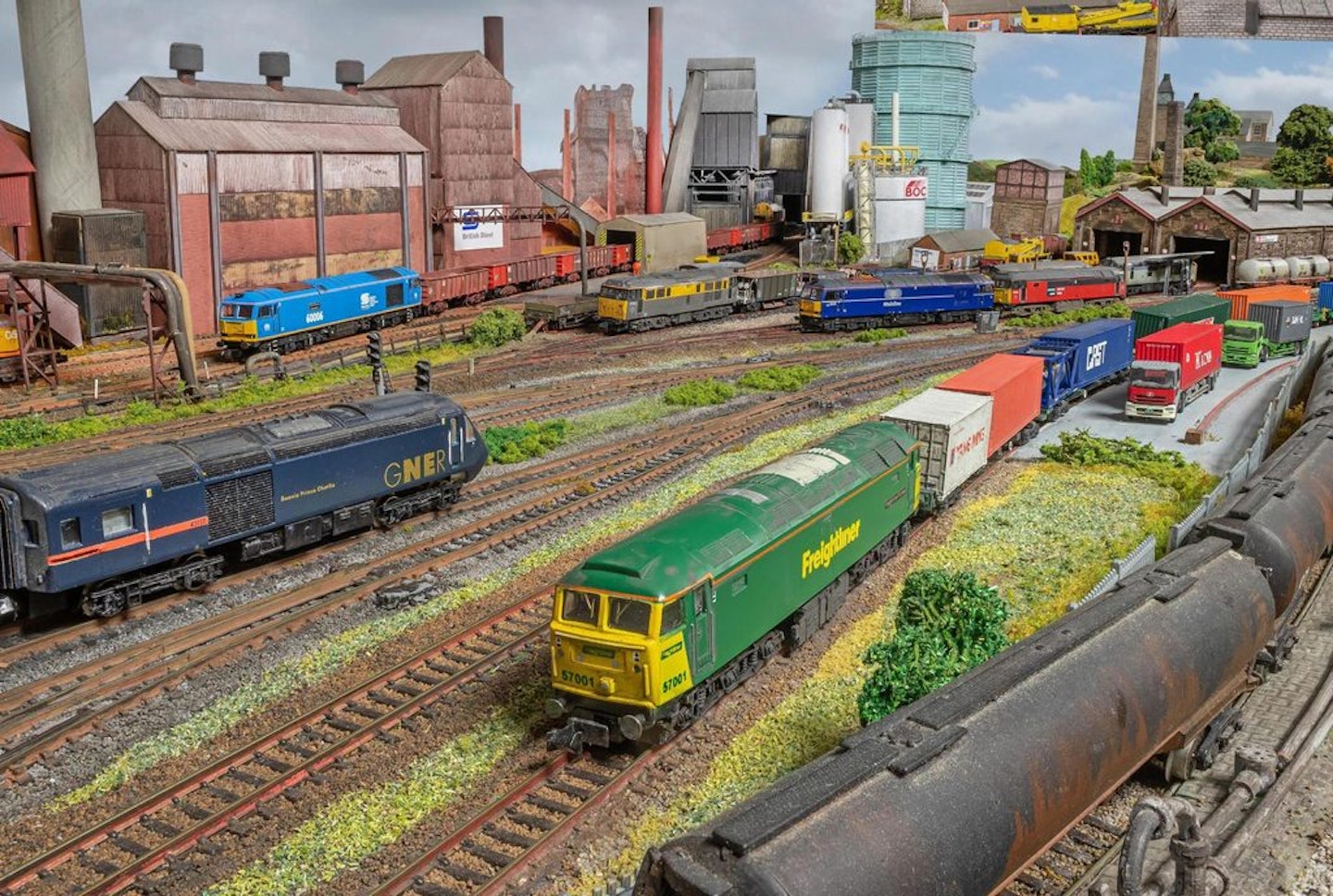
2 Phil has used an unusual technique to construct his cooling tower. Rather than buying a kit he has built it in the same way as his scenery, carving away at polystyrene until he got the right shape and then covering it with builder’s plaster.
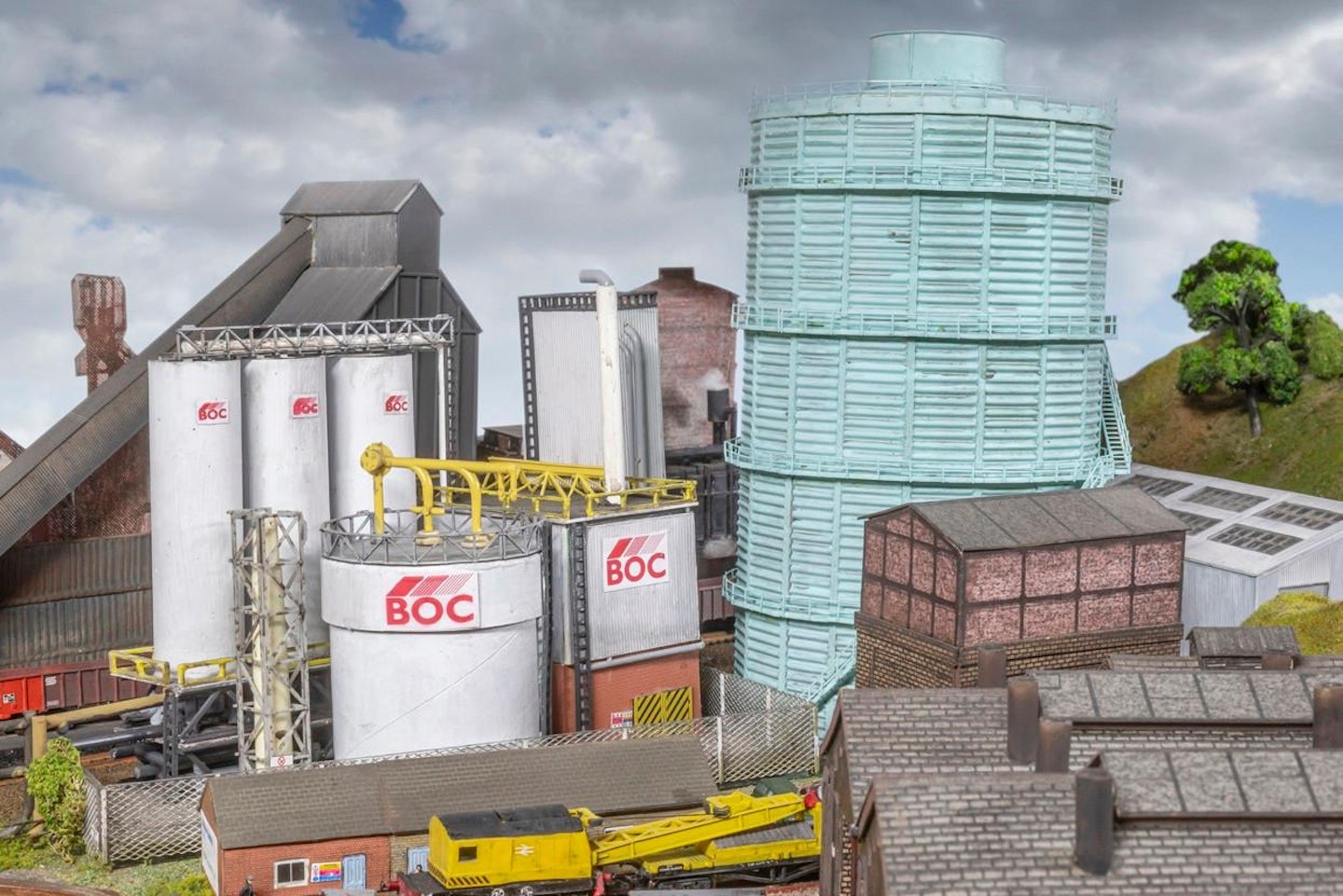
To give you some indication of just how big ‘Ebridge’ is, Phil has calculated that to run a complete loop of the track from the terminus station, around the track and back again is 44 yards, a scale 3.75 mile run. There are 12 different terminals for freight traffic, two stations, two locomotive sheds and a DMU shed, 75 points and space for 24 trains at any one time, with a complete sequence of running taking four hours. No wonder it’s taken him almost four decades to complete.
“It’s now getting to the point where things are breaking as quickly as I can mend them or that technology is advancing so quickly that the old stock just isn’t compatible with modern couplings or the ‘pizza cutter’ wheelsets all need changing out. For this article I’ve elected to set ‘Ebridge’ in the year 2000, but that would have been 15 years in the future when I started. However, I have enough stock that I can run anything from the 1960s through to today with the introduction of Kato’s Class 800 to the layout. For me, that’s the best ‘N’ gauge model I own by far. It’s got plenty of power, can cope with less than perfect track and looks superb.”
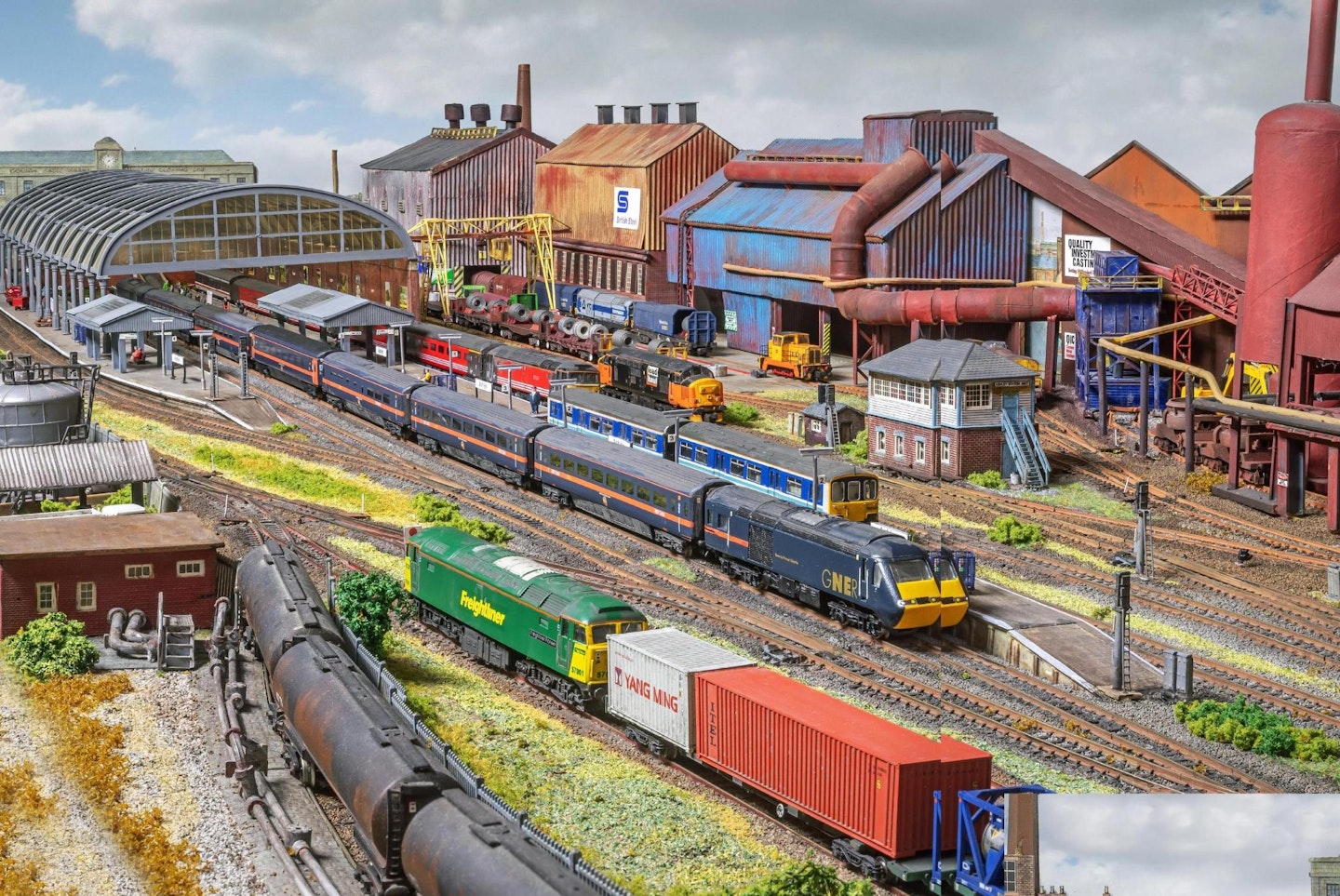
3 The working colour light signals are all connected to the track via relays. This means that as Phil removes or gives power to a piece of track, the signals will change accordingly.
Nothing is on ‘Ebridge’, be it stock or structure, without a purpose. Whether it’s transporting passengers or moving materials from one of the freight terminals to another, everything has its place and everything is sporting a well-worn appearance given to it by Phil.
“I have two methods for applying weathering to my models. In ‘N’ gauge I find trying to use an airbrush to be a waste of time as you can’t get a precise enough flow of paint for the tiny size of the models, so I do everything with a brush. Tamiya acrylics are my paints of choice with a little bit of weathering powder added in key locations at the end, but I either run a wash across the whole model so that the paint rests in all of the nooks and crannies, or dry brush paint onto the bits raised above the surface. There really is no right way, it’s just whatever feels best for that particular model.”
3 things we like
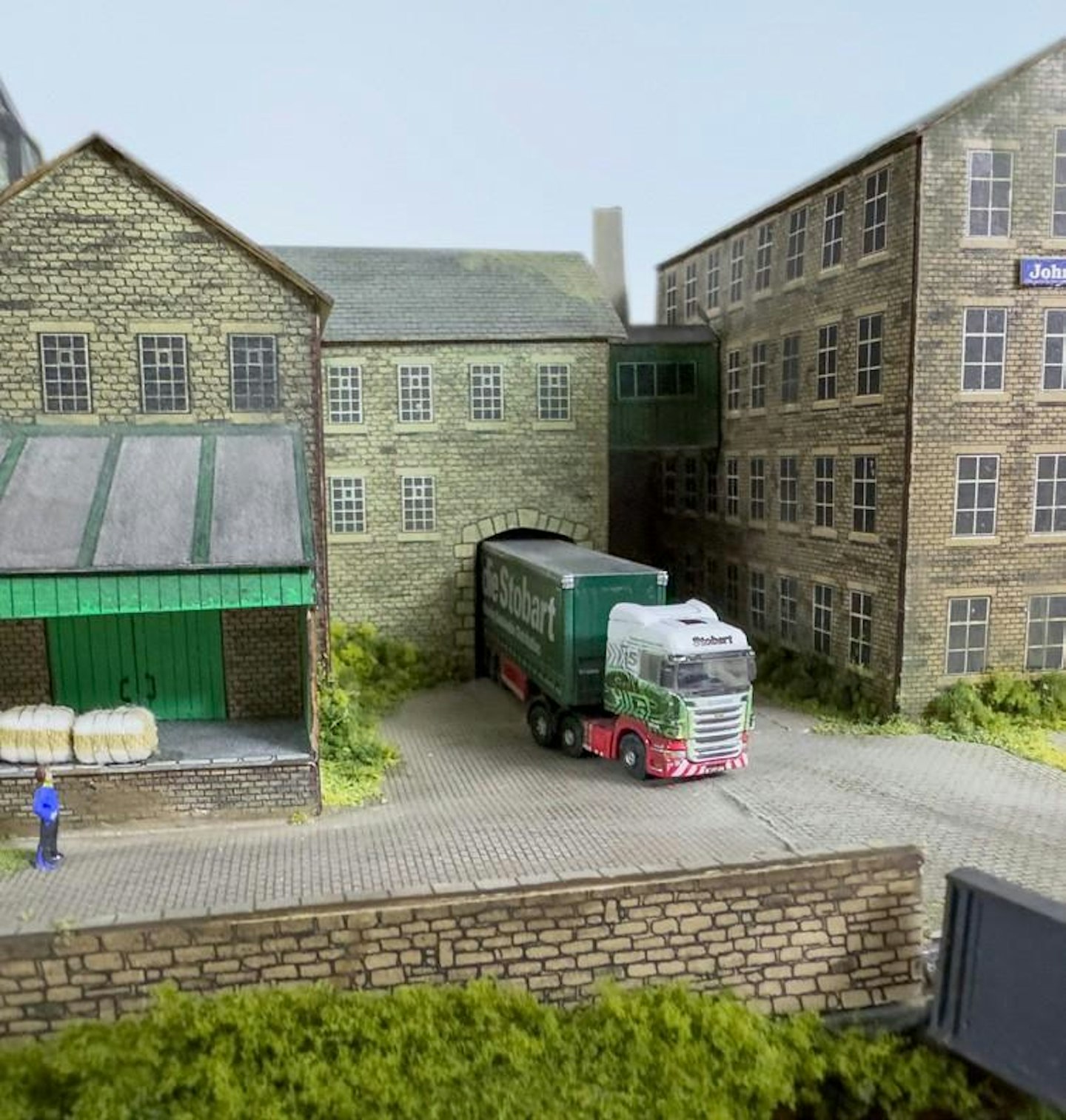
1 Driving out is the easy bit, what about reversing in?
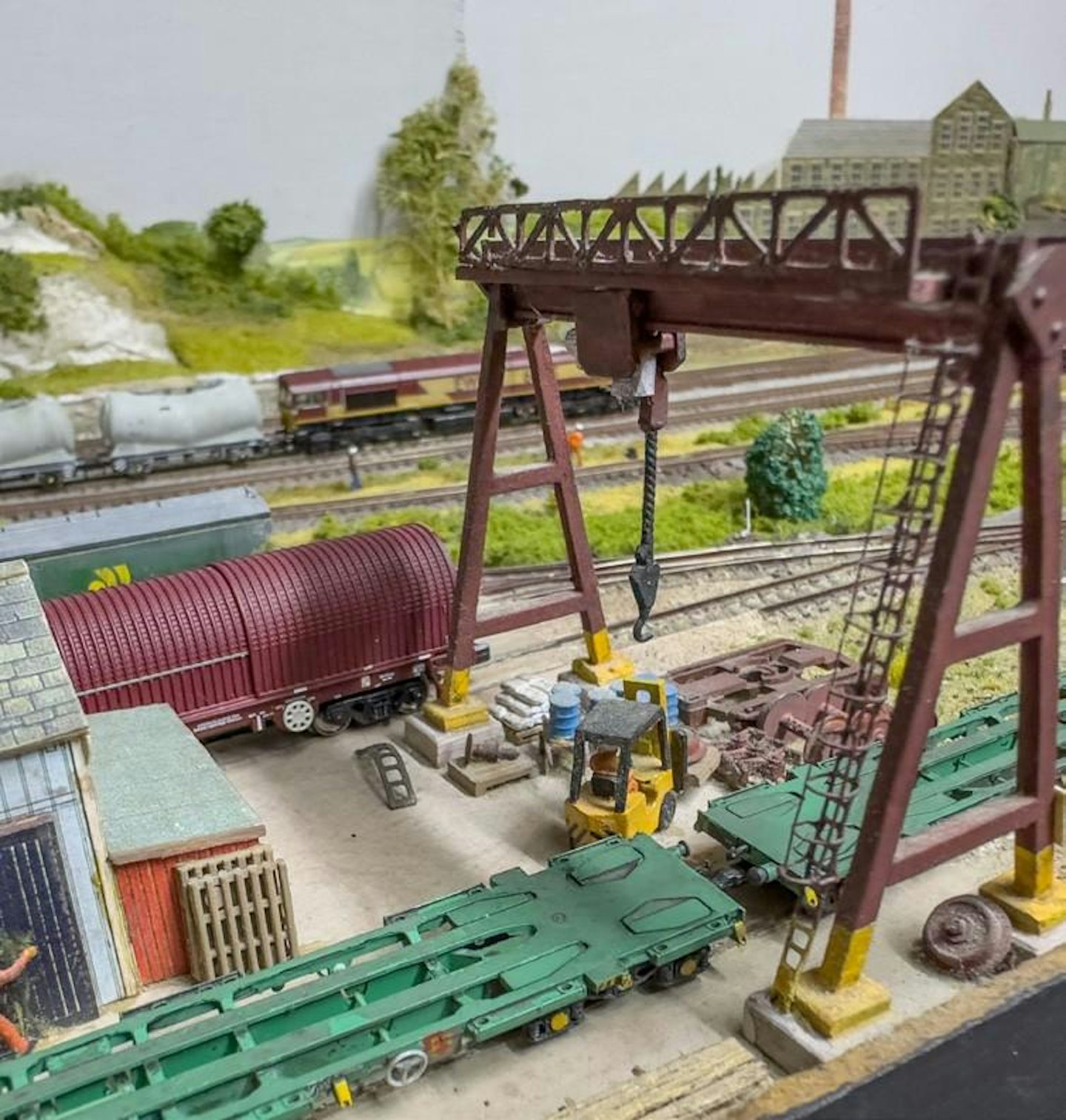
2 The overhead gantry crane outside the wagon repair shop.
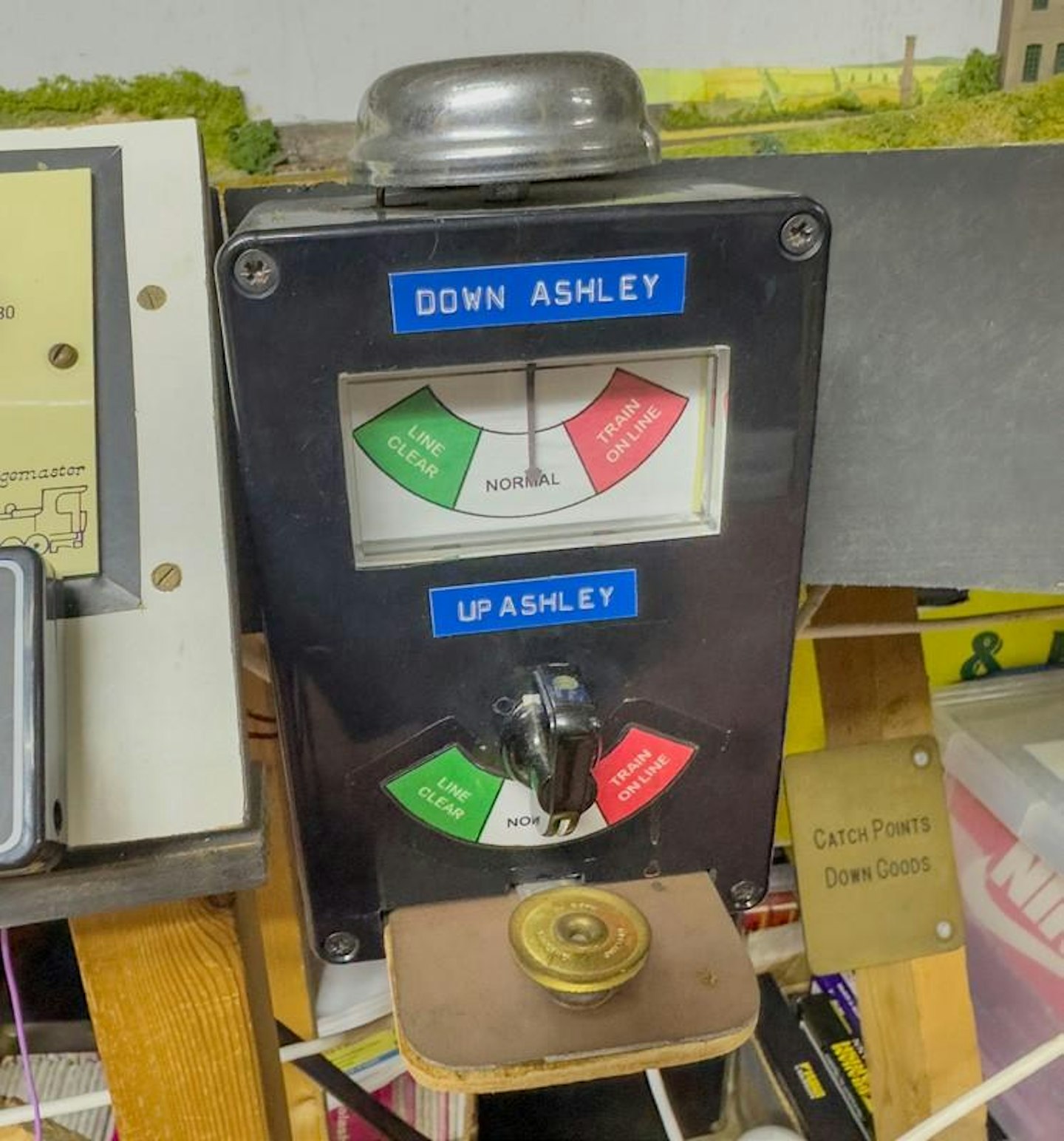
3 The telegraph instruments and bells, built to resemble the equipment in a real signal box.
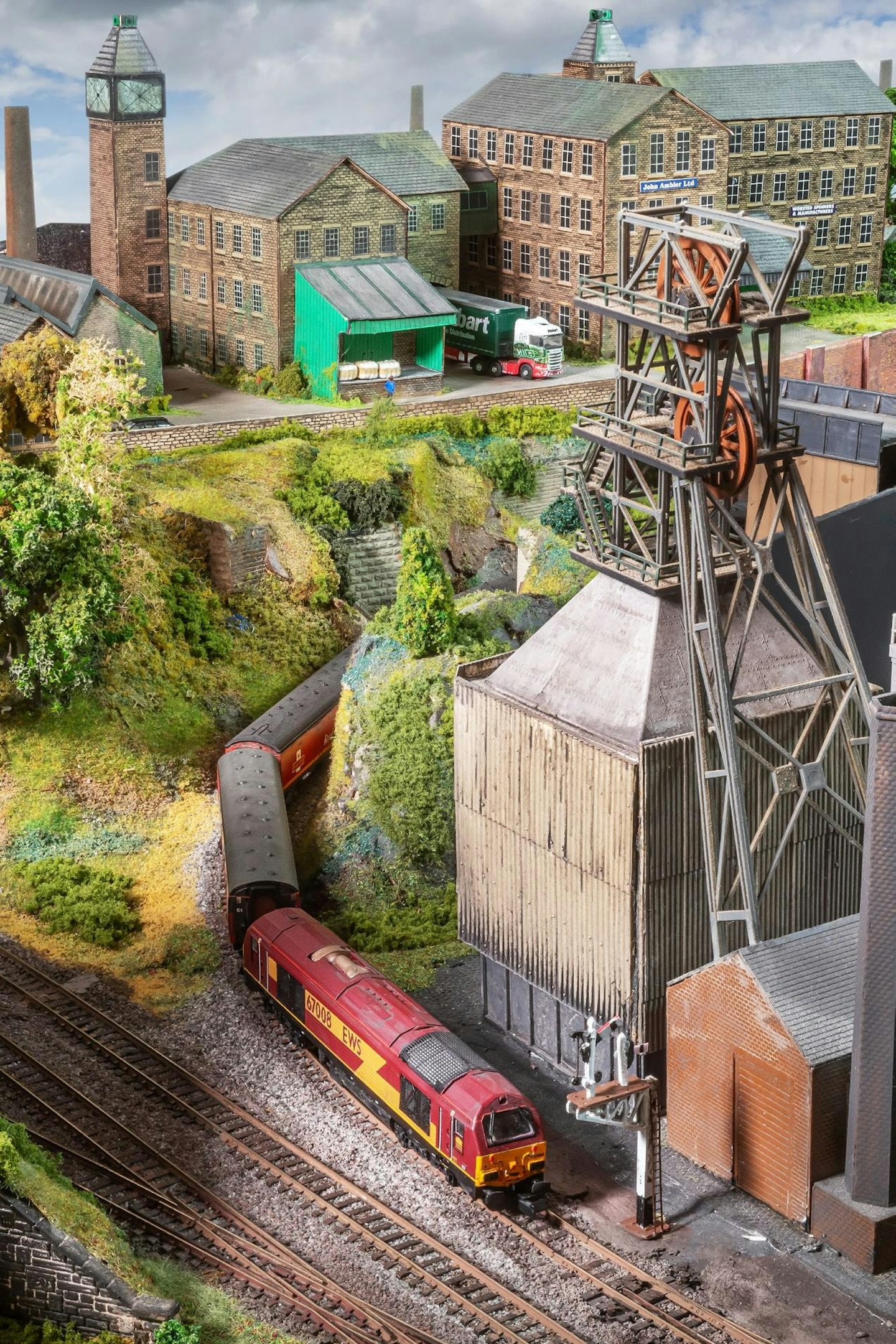
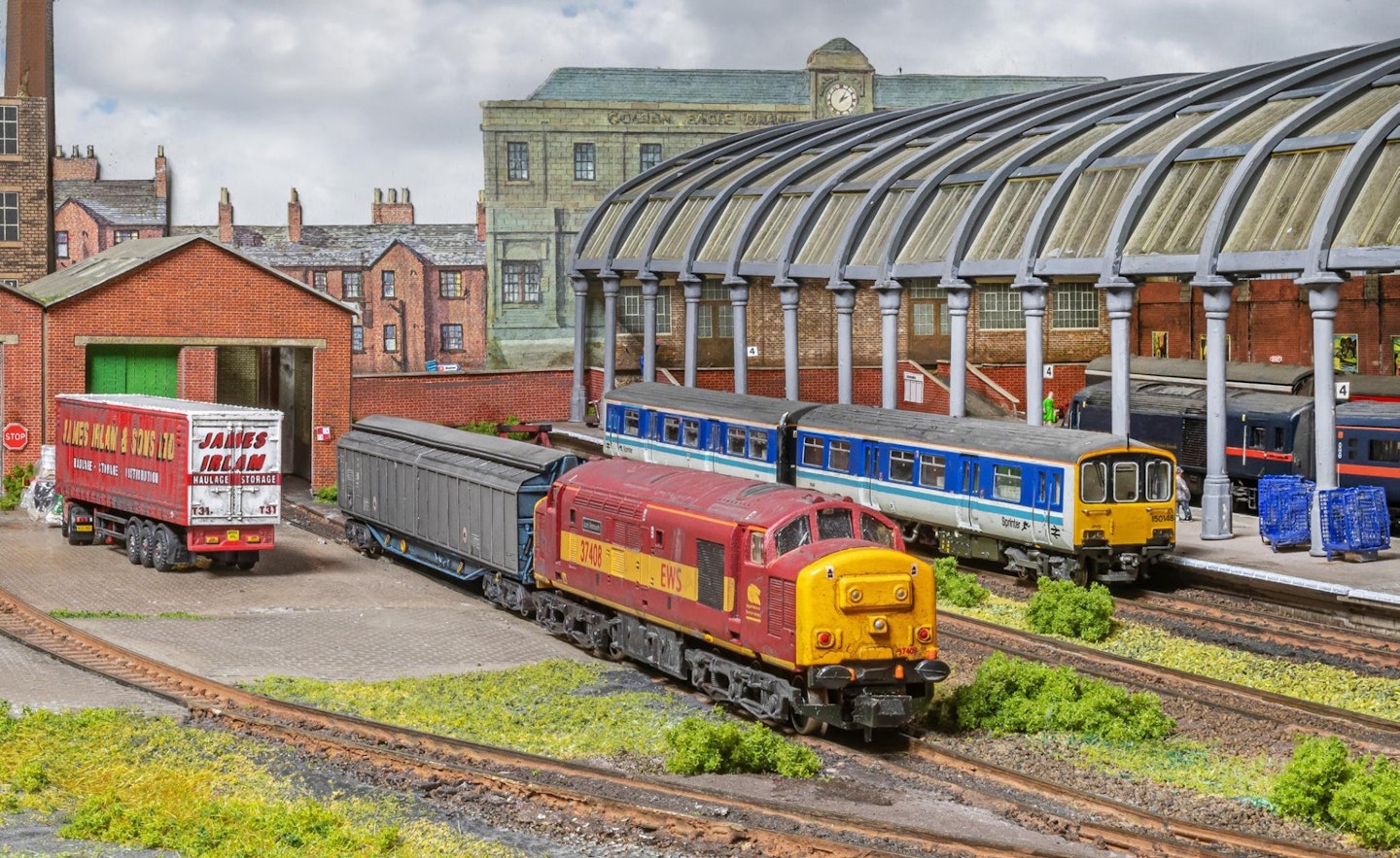
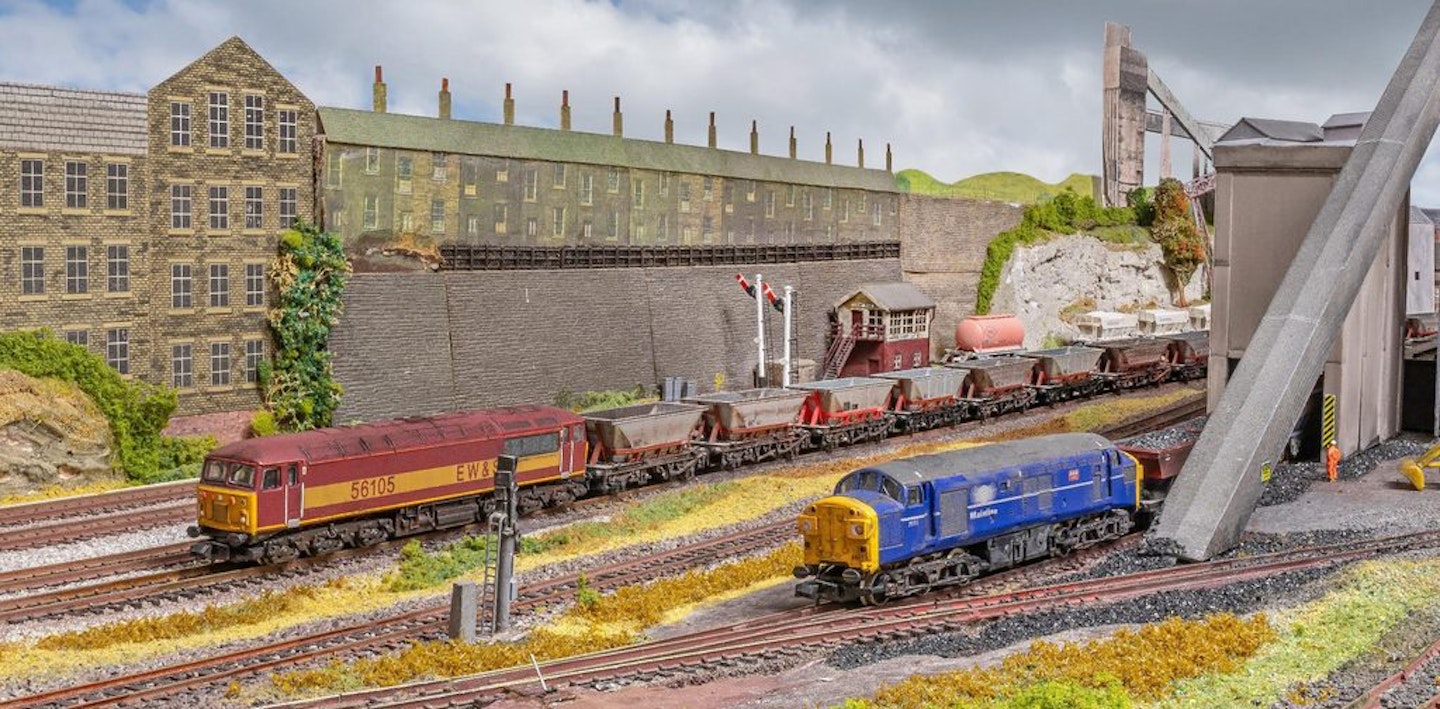
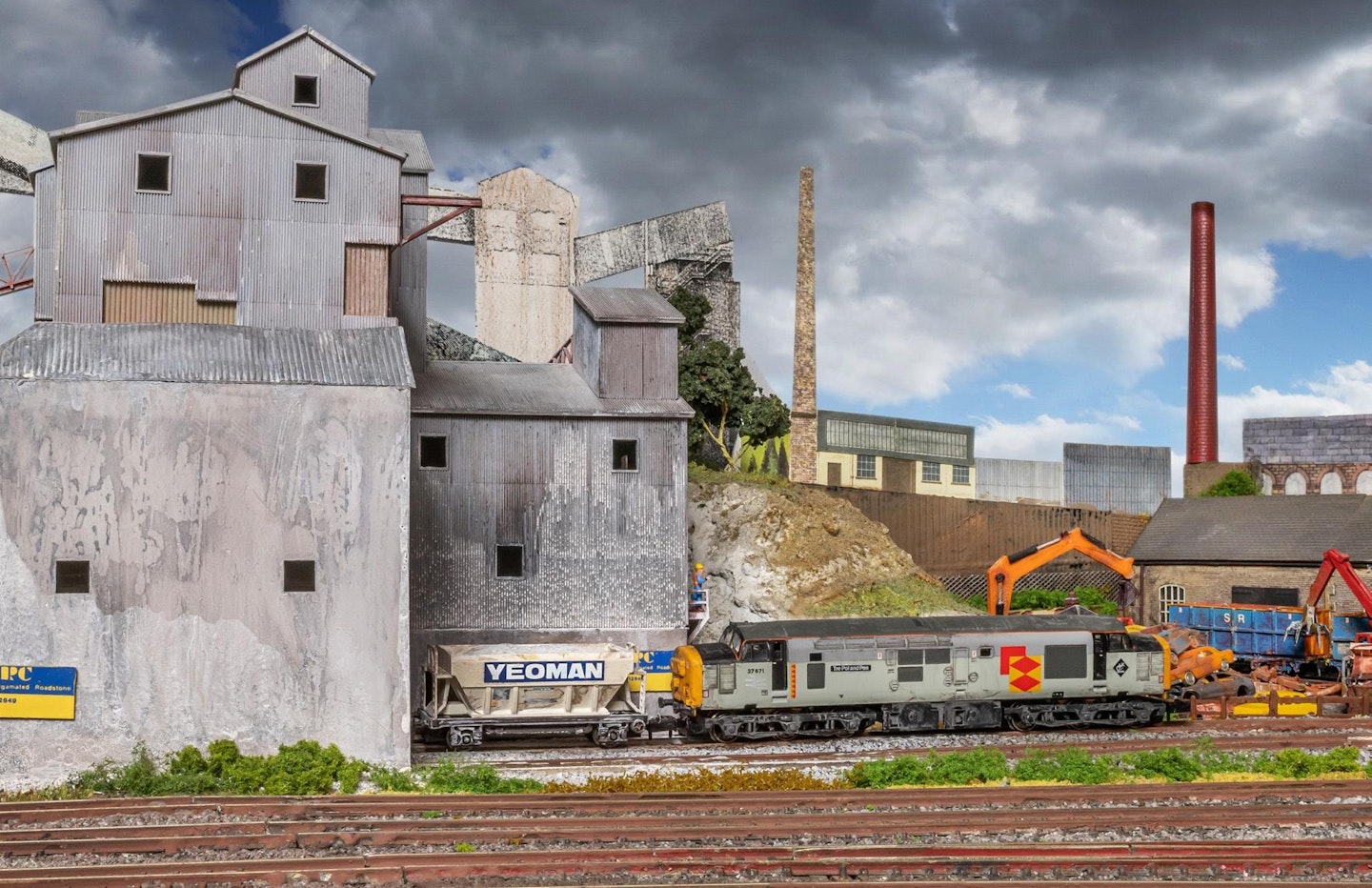
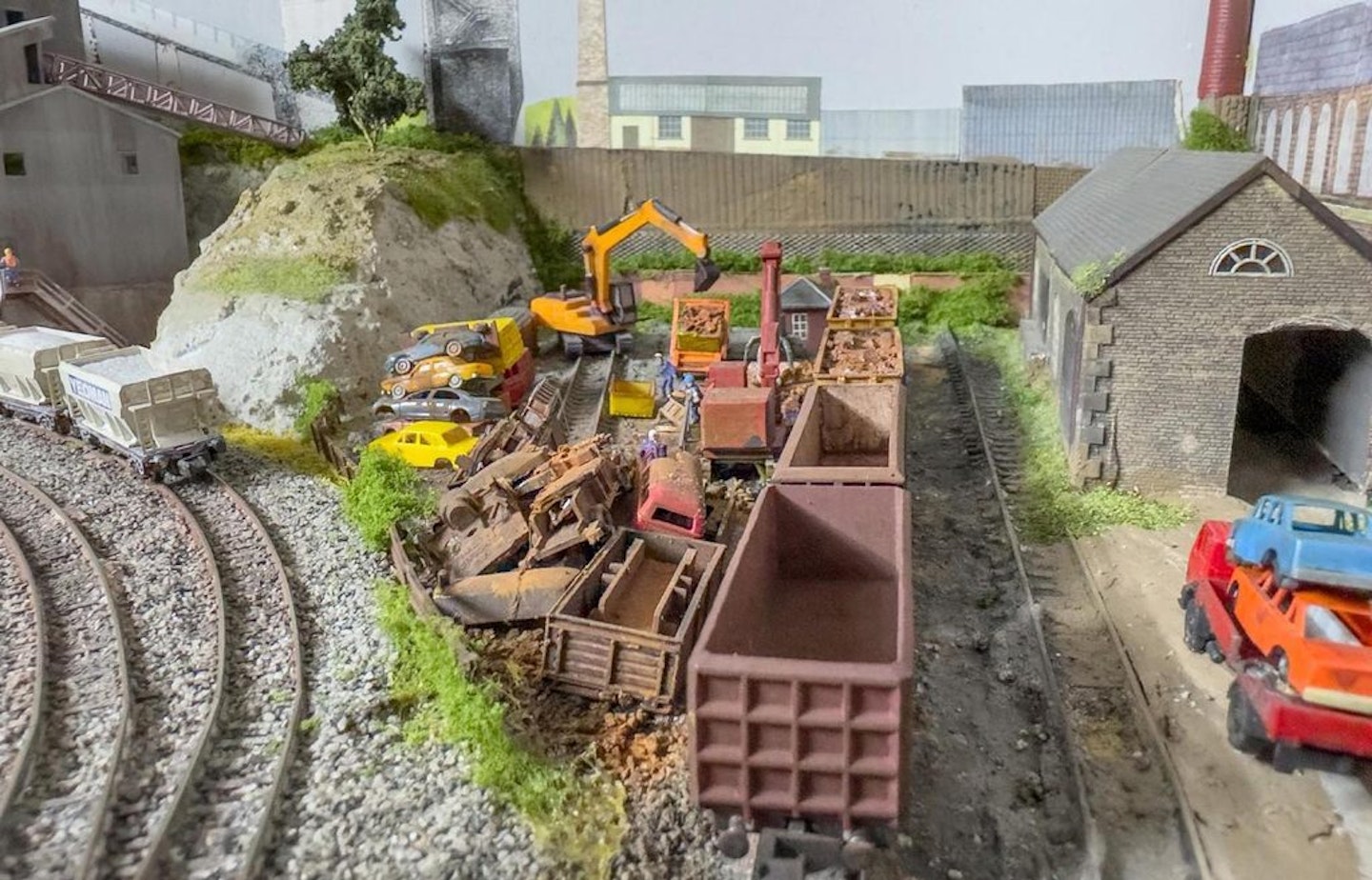
The scrapyard contains one of Phil’s most prized 3D-printed wagons. This was designed and printed by Paul Atkinson, a club member who sadly died of a heart attack a few years ago, shortly after gifting Phil a preliminary design of his wagon.
MEMORY LANE
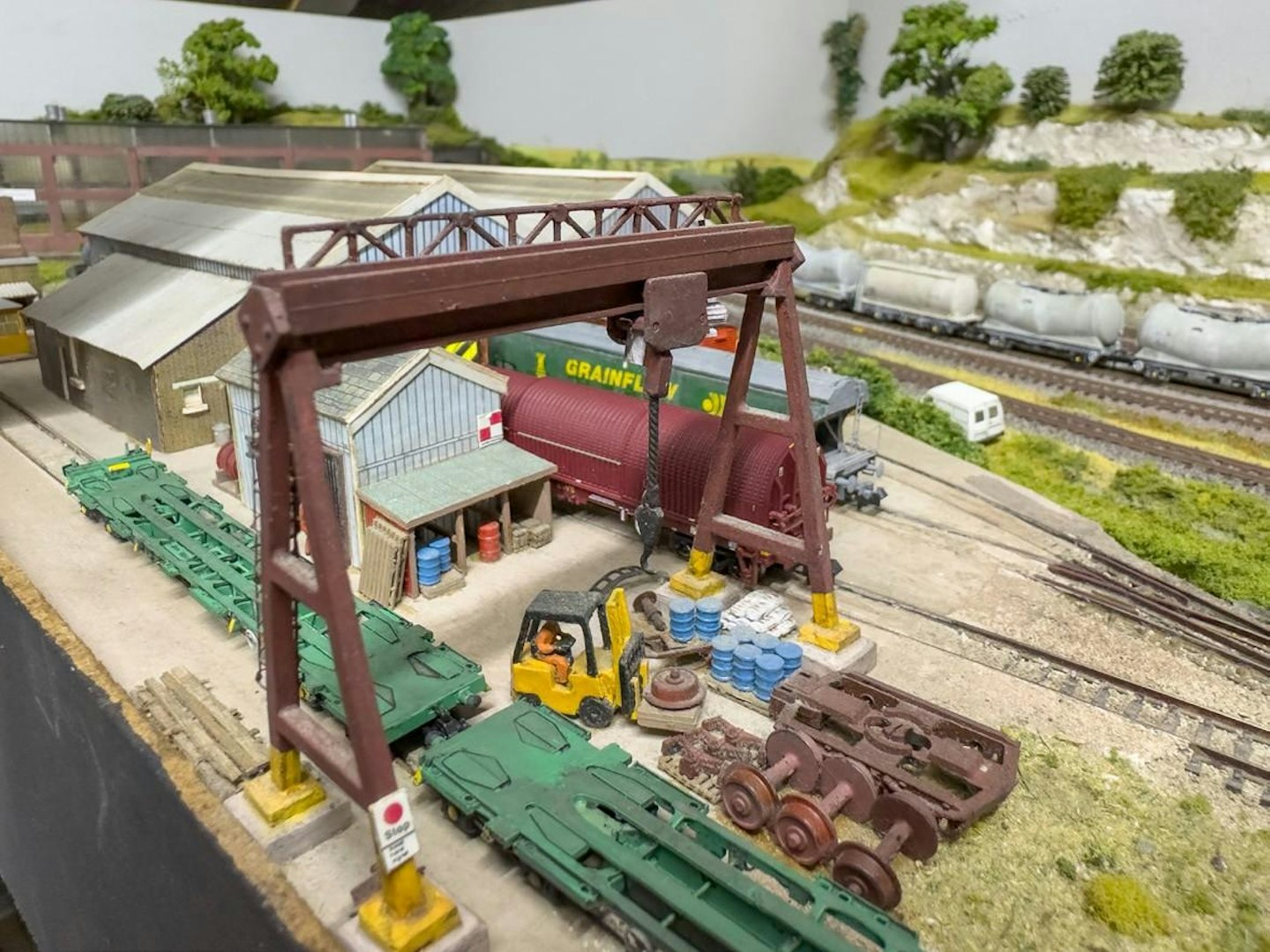
“I’m not sure what this says about the improvement of my modelling over the past half century, but I built Ebridge station when I was a teenager and it is more than 50 years old! It has been on three different layouts and doesn’t look out of place at ‘Ebridge’, even now. I don’t know if that means I built it exceptionally well all those years ago or if I’ve not made anything better since!”
The station is not the only old part of Phil’s layout, there’s some Model Rail history on there as well.
“When Model Rail was still a supplement in Rail, a paper wagon works kit was offered to readers in ‘OO’ gauge. I scanned it, scaled it down to ‘N’ gauge and wrapped it around a plastic card base to create the final structure. I then added some finer details and a modified crane from Knightwing to complete that area.”
A TOUR OF EBRIDGE
A trip around ‘Ebridge’ begins at Ashley Station junction, where nearly everything has been scratchbuilt apart from a very old Peco station roof and a couple of Metcalfe kits at the far side. Between the station and the junction is the steelworks. For this, Phil took inspiration from the Walthers kit, but this wouldn’t fit, so he made a 75% version out of plastic card to go alongside the oxygen plant and other large sheds. These have a base of suitably sized cardboard boxes, before also being covered in embossed plastic card or corrugated paper. Pipes have been created from various sprues.
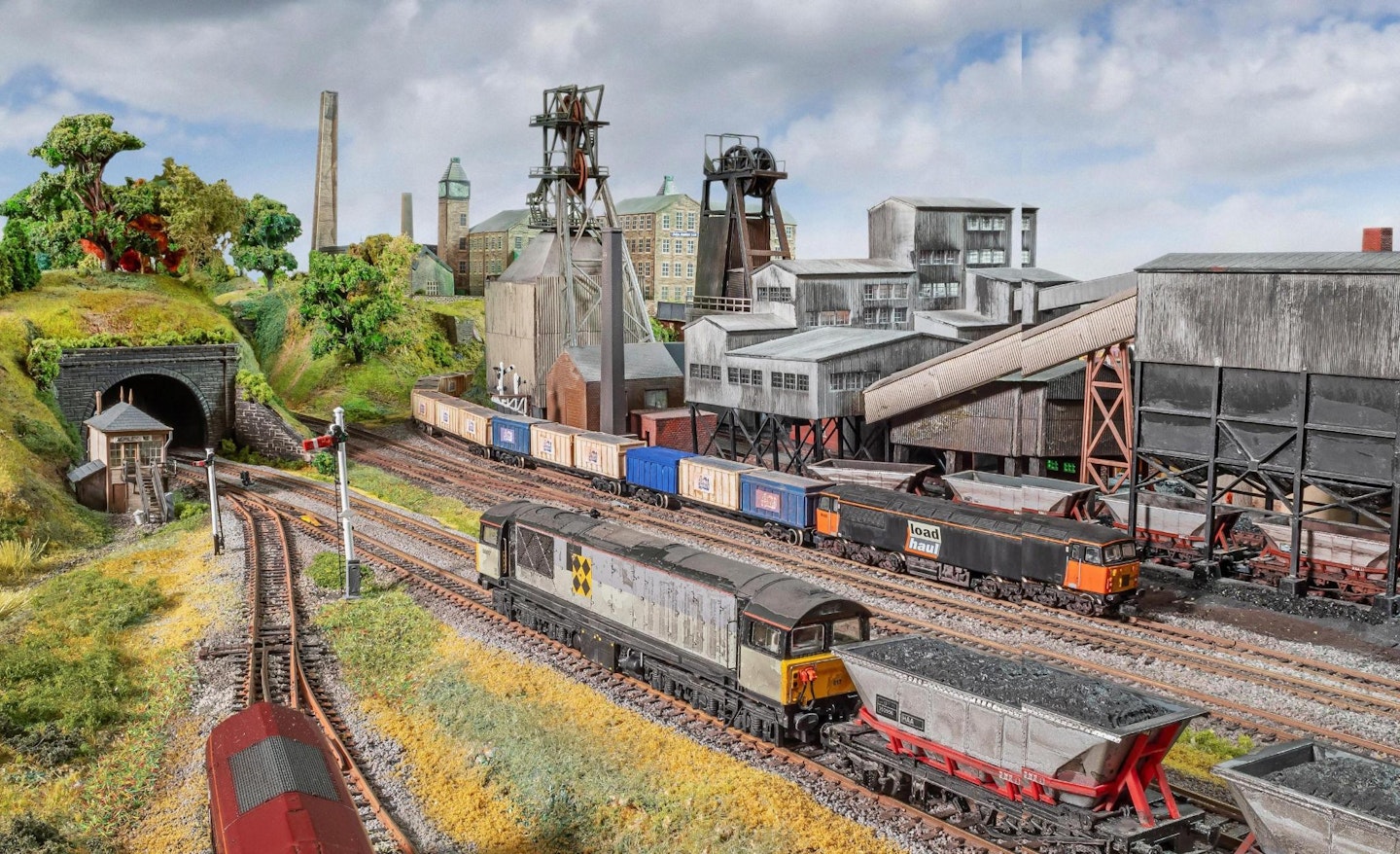
10 The large mill above Lowerhouse is an old Metcalfe kit from before the windows were added as separate pieces. Phil has said that although he could take the building to another level realism-wise, it works as a piece of scenery and he has no desire to cut out all of those windows.
As the ninety-degree turn is made, trains pass the coal mine on the left-hand side. This has been ‘cobbled together’ in Phil’s words from various Walthers kits.
“I wanted some sort of sense to the coal mine but it was difficult to find out how to arrange all of the parts and make it fit. After all, there was no template on the prototype. I felt the mine needed two winding gears, so used one from an underscale ‘OO’ kit and one from ‘N’ to add a bit of variety. As trains continue they pass the cement works on the right-hand side (another Walthers kit with a paper chimney tapered at one end), before making a left-hand turn at the power plant and by-passing Ebridge station.”
After trains have passed the station another left turn takes them past the scrapyard and stone quarry (another kit) on the right-hand side and a coke works on the left. A tunnel and scenic break is encountered before passing the coal mine again and into Ebridge station before arriving at Lowerhouse or carrying on to another tunnel which houses the reversing loop. This gives a run of around 22 yards in each direction.
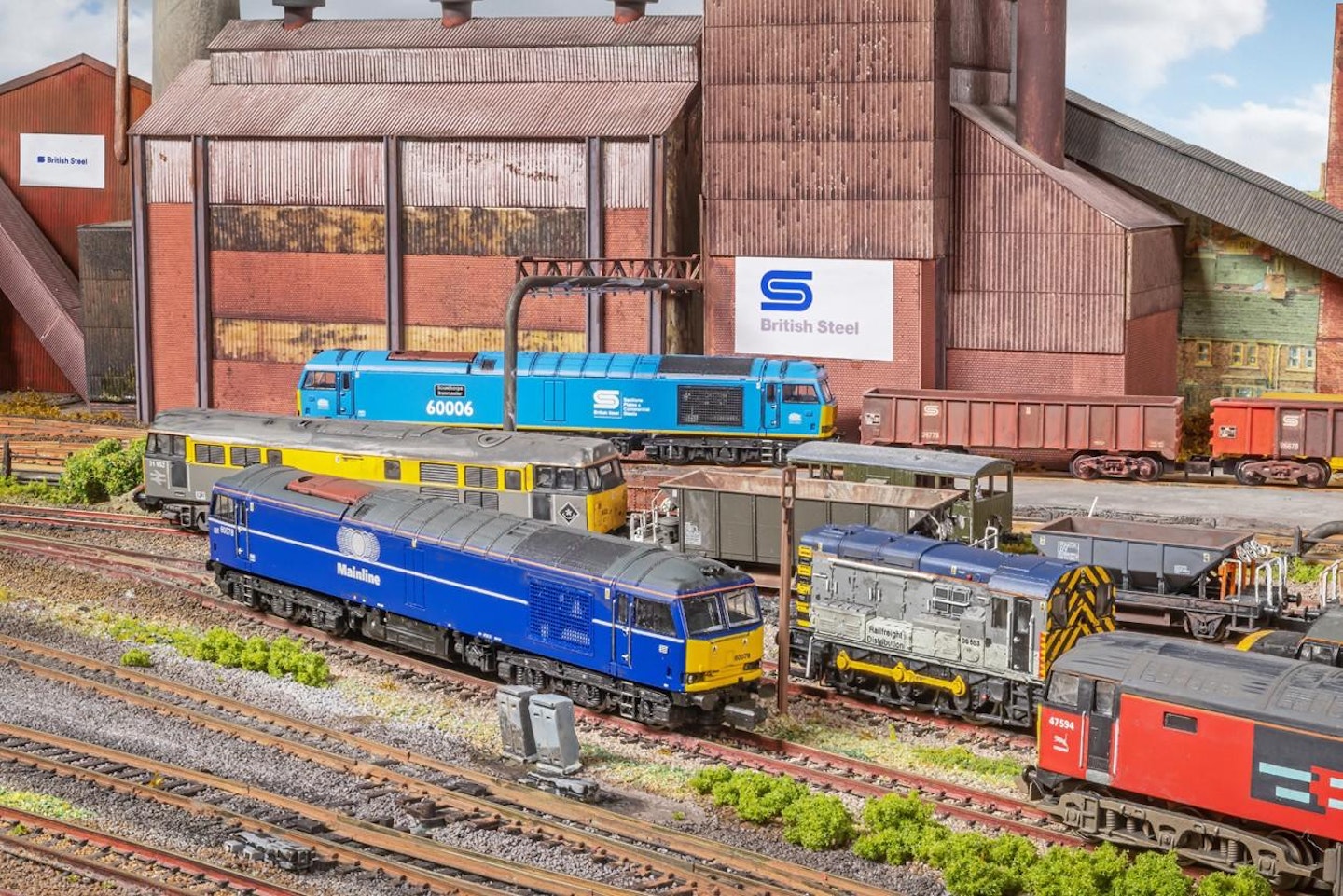
“I don’t count the locomotive shed and modern depot as part of the 3.75 mile run as you can only access that area from the Lowerhouse branch line. In my universe the area is now owned by Northern, but that’s as much of a location placement as I’ve given the whole layout! I can run ‘Ebridge’ with either two operators or one. One person can operate Ashley Station Junction and the steelworks while the other does the main loop or I can sit in the middle of the loop and just watch trains. It is more of an operation layout than a looking-at layout so I can operate from the terminus station across the whole of the layout, it just gets a bit more complicated to keep an eye on.”
Finally, trains pass through a tight cutting created from polystyrene and return to the coal mine. This is all leftover packaging from the last time Phil bought a washing machine, and he has covered it with a crumpled grass mat torn into smaller pieces and covered with additional details.
“I’ve avoided using static grass around ‘Ebridge’, finding I get much more control doing it by hand, especially with so many areas being too small to get a static grass machine to them with any real success.
ONE OF A KIND
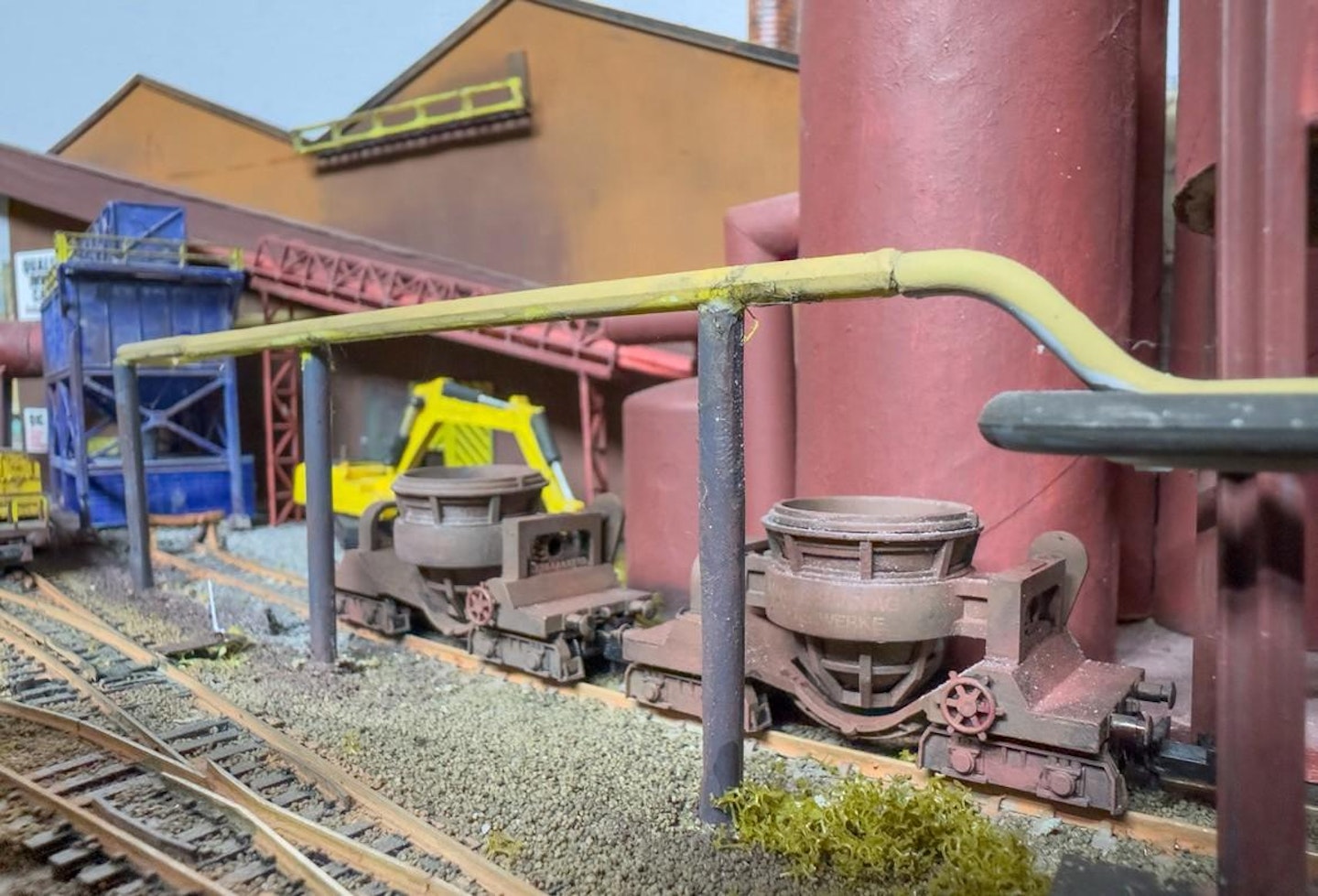
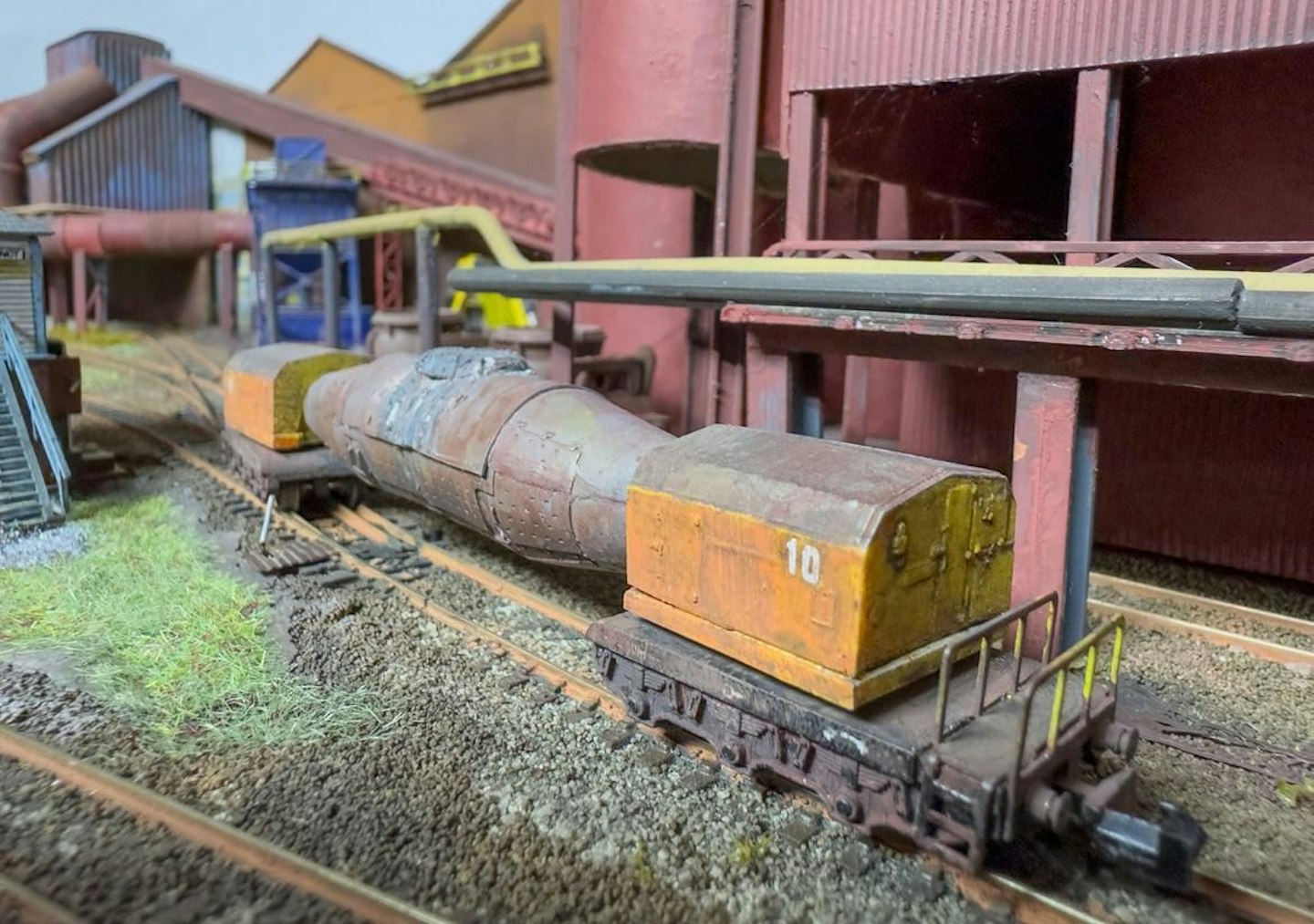
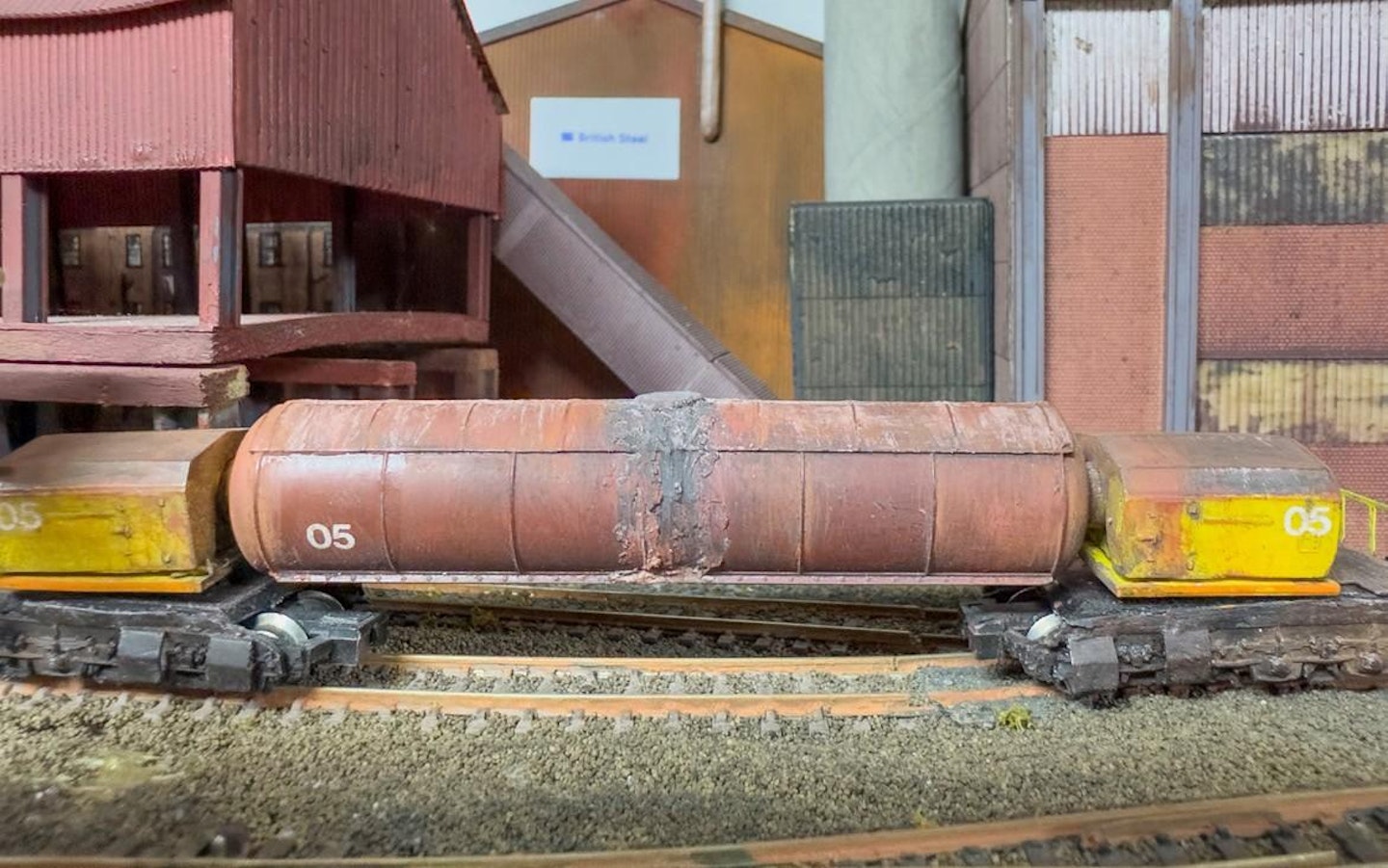
A rarely modelled side of steelworks is the various wagons required to move materials around the works. Phil purchased the Minitrix slag ladles from eBay, threw the box away, repainted them, and has never found any more since! The hot metal carrier was also a Minitrix model, but it was so huge that Phil chopped it into pieces, resin cast the bits he needed and put the castings together to make his carrier. After this, he visited Scunthorpe Works and discovered that not all of the molten metal carriers were torpedo-shaped, so he found a spare tank he had lying around and painted that to match. The metal and slag which has accumulated around the top of the wagon has been created from plastic filler.
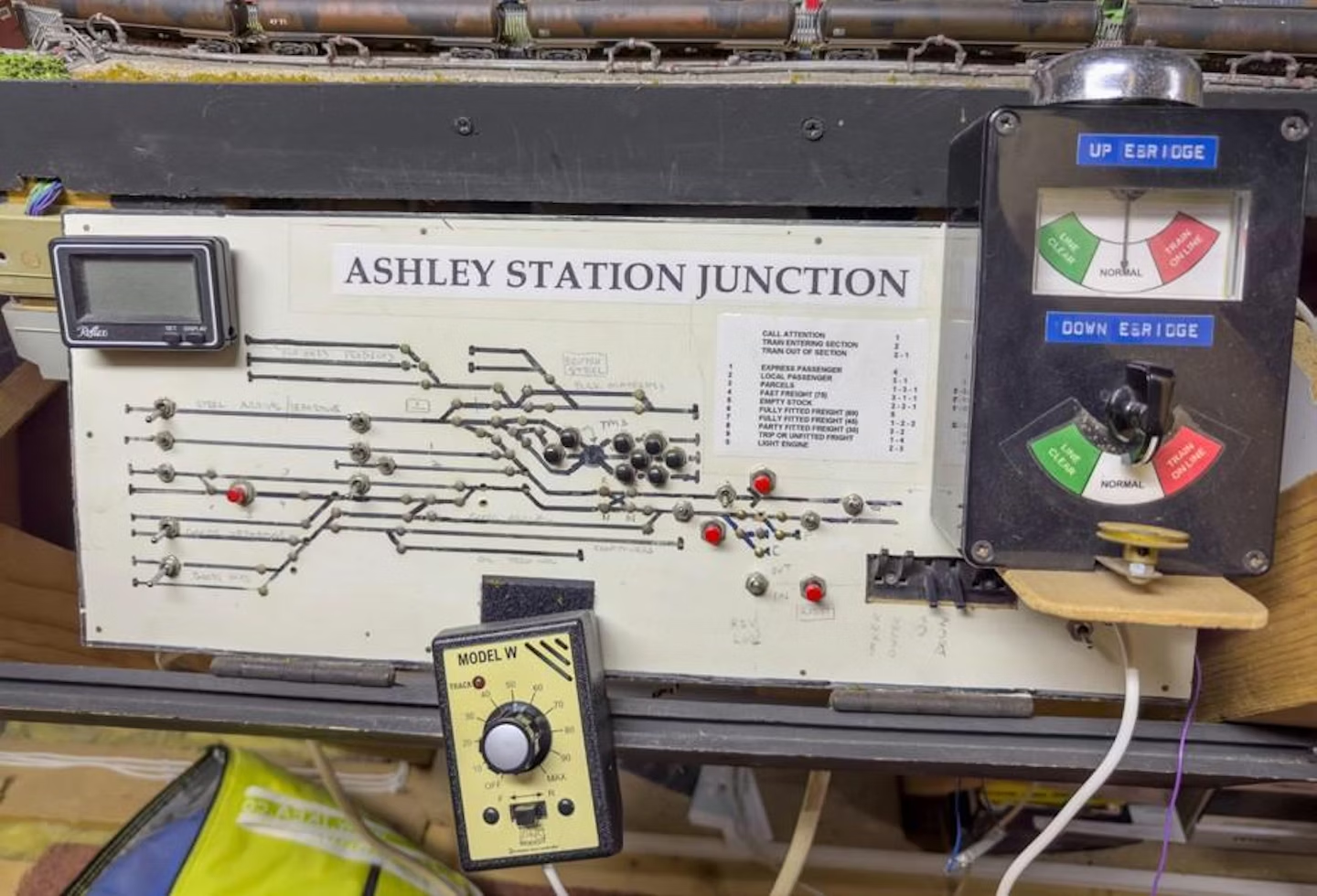
The signal bells on each of the control panels both contain a dial from Phil’s dad’s old stereo tape deck. With a couple of hidden resistors behind the box, Phil has been able to make the dials default back to normal after they have been turned either way.
A LAYOUT IS NEVER FINISHED
You could be forgiven for thinking that after nearly 40 years Phil’s layout would finally be completed, but of course there are always things to do.
“I made a rod for my own back really because when Chris came to photograph another one of my layouts ‘Derwenthorpe’ (MR326), I showed him ‘Ebridge’ looking for some advice on how to further improve it. The advice was given, followed by ‘I’ll be back in six months!’ As many modellers will tell you there’s nothing like a deadline to focus the mind, and I was up against it to paint the sides of all of the rails, populate the layout with more figures and add small details such as the Knightwing white metal parts at the DMU depot. I’m still looking to complete the signalling which I didn’t get done in time for the photographs. ‘Ebridge’ needs more working colour light signals. Those which are on the layout have been scratchbuilt with telephones, subsidiary shunt signals, theatre displays and number plates. The banner repeaters and minor details are from N Brass Locos, while the semaphore ground signals are from West Hill Wagon Works. Maybe one day I’ll get it finished!”
We’re rather glad that Phil decided to split his layout into 10 boards, and improve on it house move after house move, or it wouldn’t be the stunning ‘N’ gauge work that it is today. Building a layout with the future in mind is always a good idea as none of us knows what life is going to throw at us, but in Phil’s case his house moves allowed him to not only keep ‘Ebridge’ but improve upon it. We hope for his sake though he doesn’t need to move house again!
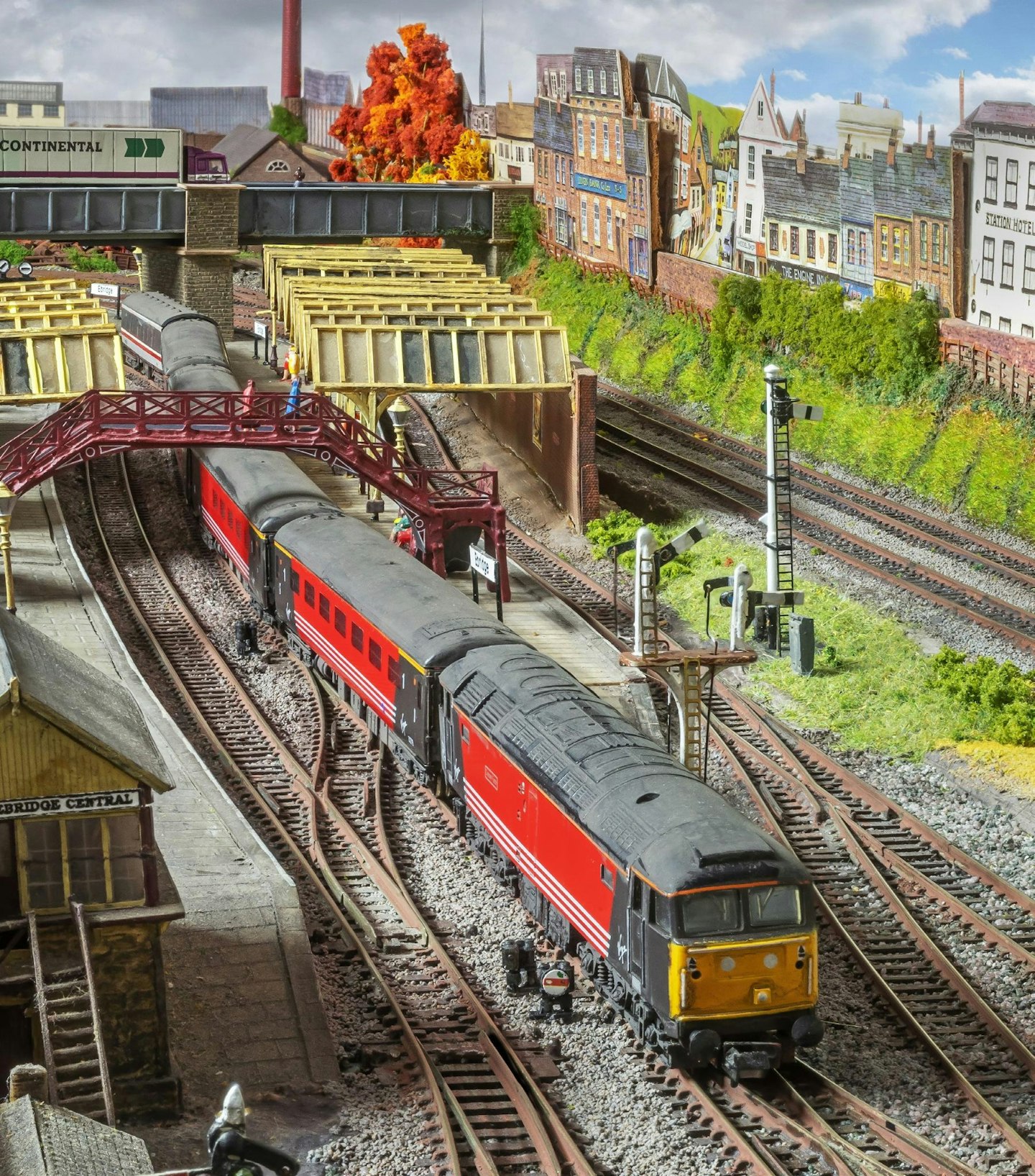
FACTFILE: ‘EBRIDGE’
-
Gauge and scale: 2mm:1ft, 9mm gauge, ‘N’
-
Size: 18ft by 10ft
-
Track: Peco Code 80
-
Power and control: Analogue
-
Time to build: 38 years
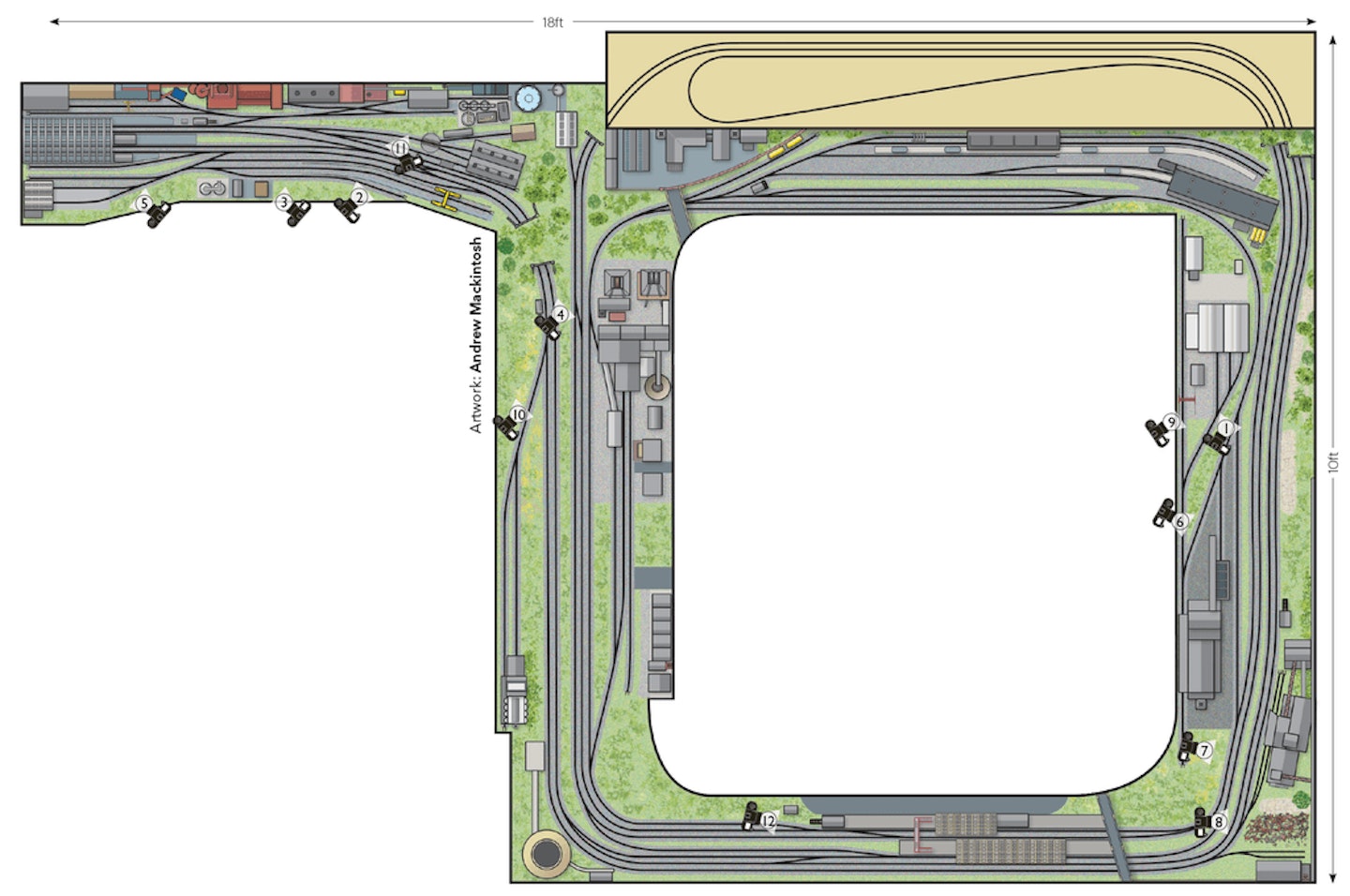
ABOUT THE MODELLER: PHIL MASON
“I enjoy cycling a couple of times a week and have done the three peak cyclo-cross 20 times. I also spend my time gardening, listening to classical music and I’m ‘odd job man’ at a local church and community centre. Other than that I work on my various model railways. The hobby keeps the brain going!”
